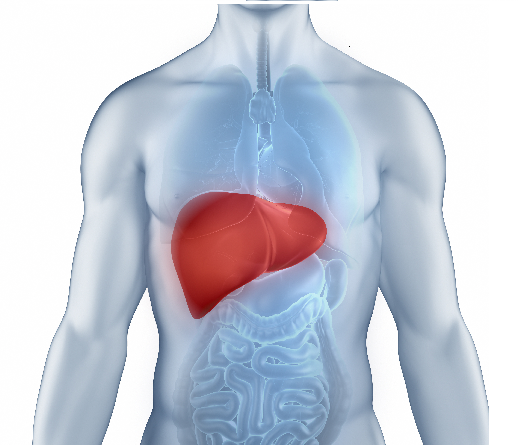The Role of Genetics in Brain Tumours: Are You at Risk?

A brain tumour is the result of abnormal cell growth in the brain. This abnormal growth can be malignant (i.e., cancerous) or benign. Both malignant and benign brain tumours are dangerous and affect brain function, causing several complications.
While anyone can develop a brain tumour, certain factors can put one at an elevated risk. One such factor is brain tumour genetics. People having a close family member with a history of brain cancer are at a higher risk.
Understanding the risk factors of brain tumours can help people assess their risk and take timely preventive measures. This article discusses the various risk factors of brain tumours, their causes, symptoms, and more.
What is Brain Tumour?
A brain tumour, whether cancerous or benign, is an abnormally developed mass of cells in the brain or the surrounding area. It can significantly impact brain function by pressing on the surrounding nerves and tissue when it becomes too large.
Tumours that develop first in the brain are called primary tumours. Secondary brain tumours develop due to cancer in some other area of the body. There are several types of benign and malignant brain tumours. Some of them grow fast (aggressive), while others are slow-growing.
What Causes Brain Tumours?
A change in the DNA of some brain cells causes brain tumours. A cell’s DNA determines when it grows, multiplies, divides or dies.
Defective DNA causes some cells to multiply rapidly, forming benign or cancerous masses. These masses take up additional space in the brain and press on the surrounding blood vessels, nerves, and brain tissue, causing various complications.
What are the Risk Factors Associated with a Brain Tumour?
The actual reason brain cell DNA becomes defective is unknown. However, some risk factors increase the likelihood of it.
1. Environmental Factors
Exposure to some environmental hazards can increase the risk of developing brain tumours. These factors include:
● Toxic Substances: Exposure to certain harmful substances such as paints, solvents and some pesticides can increase the risk of brain tumours.
● Nitrates: Some cured meats, cigarettes and cosmetics contain compounds called nitrites and nitrates, which can increase the risk of brain tumours.
● Viruses: Exposure to some viruses, such as Epstein-Barr virus or cytomegalovirus, can increase brain cancer risk.
2. Genetic Factors
Genetics also play a role in brain tumours. Five to ten percent of people diagnosed with brain tumours have a family history. Some genetic syndromes (passed down from parents to child) include:
● Neurofibromatosis: This genetic condition increases the risk of certain types of brain cancers.
● Von-Hippel Lindau Syndrome: This condition is associated with a genetic change that increases the risk of benign and cancerous tumours in the body.
● Turcot Syndrome: The mutation of three genes increases the risk of brain tumours in this condition.
● Tuberous Sclerosis: This genetic condition is associated with a higher likelihood of benign brain tumours.
3. Individual Factors
● Weak Immune System: A weak immune system raises the likelihood of brain and spinal cord tumours.
● Birth Irregularities: Congenital disabilities increase the risk of cancers, including brain cancer in children.
● Being Tall: A taller height increases the risk of developing brain tumours.
4. Demographic Factors
● Age: Aging increases the risk of brain tumours.
● Sex: Men are at an elevated risk of developing brain tumours.
● Exposure to Radiation: Someone who has been exposed to a strong type of ionizing radiation has an increased risk of brain tumour.
What are the Symptoms of Brain Tumour?
Brain tumour symptoms include:
● Headaches
● Seizures
● Changes in personality
● Weakness or paralysis in part or one side of the body
● Problems with vision and hearing
● Tingling and numbness in the face
● Confusion and disorientation
● Nausea or vomiting
How is a Brain Tumour Diagnosed?
The diagnosis of a brain tumour involves a physical exam and imaging tests. In the physical exam, the doctor takes the patient’s medical and family history and looks for the symptoms of a brain tumour. The doctor can also perform a neurological exam to determine brain functionality.
Further, for confirmation, the doctor can perform the following tests:
1. Brain MRI: A brain MRI scan creates a detailed image of the brain, which can help the doctor locate the exact location of the tumour.
2. Biopsy: In a biopsy, a small portion of the tumour is removed and tested to determine its type and whether it is cancerous.
Depending of the diagnosis, the doctor can recommend a suitable course of brain tumour treatment.
Brain tumours develop due to DNA changes in the brain cells that cause them to multiply uncontrollably. Certain genetic, environmental, individual, and demographic factors increase the risk of developing brain tumours. If someone has a family history of brain cancer, they should consult a doctor and book a hereditary cancer gene test at Dr Lal PathLabs.
FAQs
1. Brain cancer: Is it hereditary?
If a person has a family history of brain cancer, they are at a higher risk. Additionally, certain hereditary genetic syndromes can increase brain cancer risk.
2. Can brain tumours be prevented?
Brain tumours cannot be prevented. However, one can lower the risk of developing brain tumours by avoiding environmental factors such as smoking and radiation exposure.













